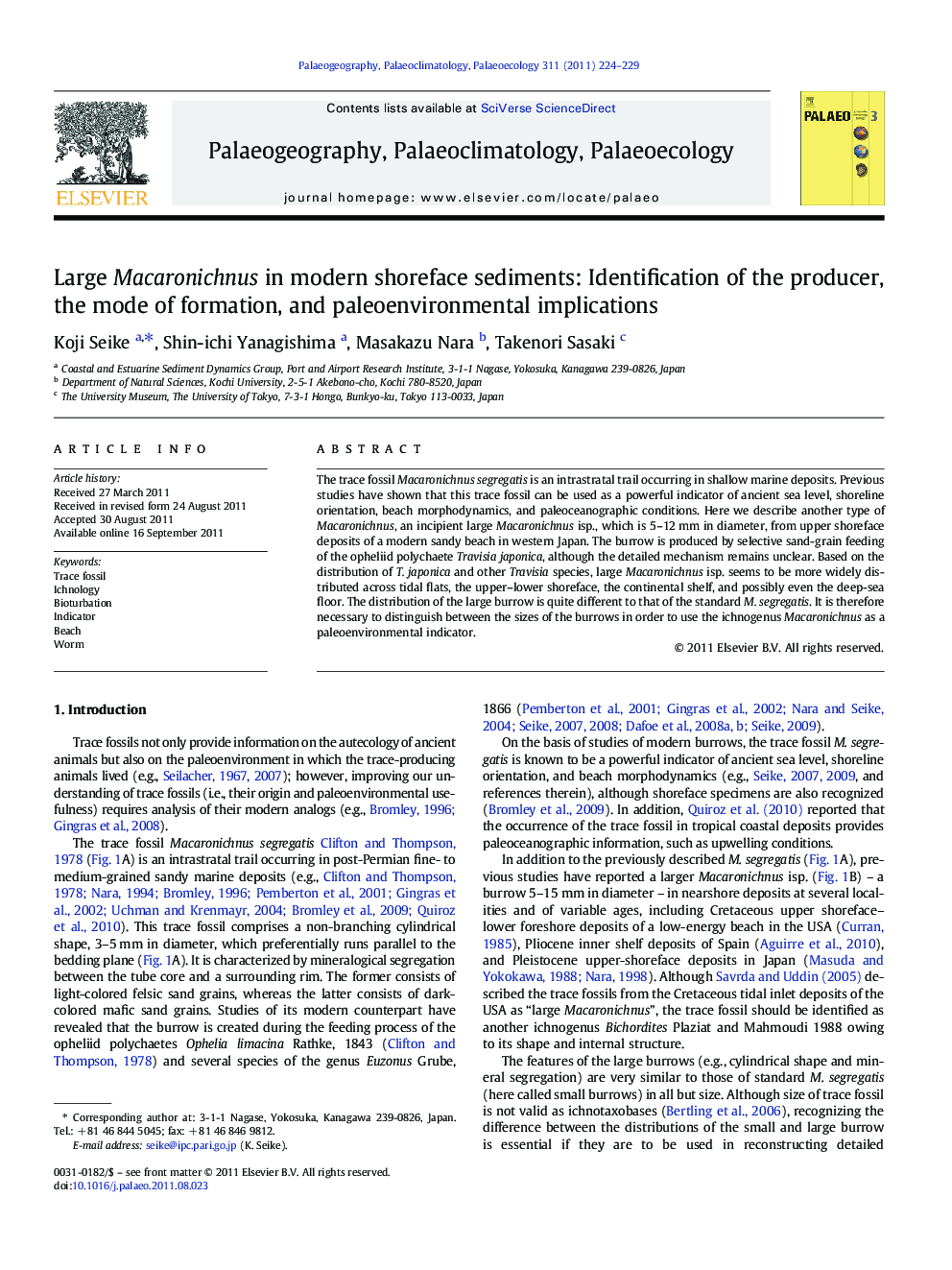| Article ID | Journal | Published Year | Pages | File Type |
|---|---|---|---|---|
| 4467068 | Palaeogeography, Palaeoclimatology, Palaeoecology | 2011 | 6 Pages |
The trace fossil Macaronichnus segregatis is an intrastratal trail occurring in shallow marine deposits. Previous studies have shown that this trace fossil can be used as a powerful indicator of ancient sea level, shoreline orientation, beach morphodynamics, and paleoceanographic conditions. Here we describe another type of Macaronichnus, an incipient large Macaronichnus isp., which is 5–12 mm in diameter, from upper shoreface deposits of a modern sandy beach in western Japan. The burrow is produced by selective sand-grain feeding of the opheliid polychaete Travisia japonica, although the detailed mechanism remains unclear. Based on the distribution of T. japonica and other Travisia species, large Macaronichnus isp. seems to be more widely distributed across tidal flats, the upper–lower shoreface, the continental shelf, and possibly even the deep-sea floor. The distribution of the large burrow is quite different to that of the standard M. segregatis. It is therefore necessary to distinguish between the sizes of the burrows in order to use the ichnogenus Macaronichnus as a paleoenvironmental indicator.
Graphical abstractFigure optionsDownload full-size imageDownload high-quality image (634 K)Download as PowerPoint slideHighlights►We describe incipient large Macaronichnus from modern shoreface deposits. ►The burrow is constructed during the feeding process of the opheliid polychaete. ►The burrow is distributed across a wide range of marine deposits. ►Large Macaronichnus is found in different depositional settings to that of small one.
